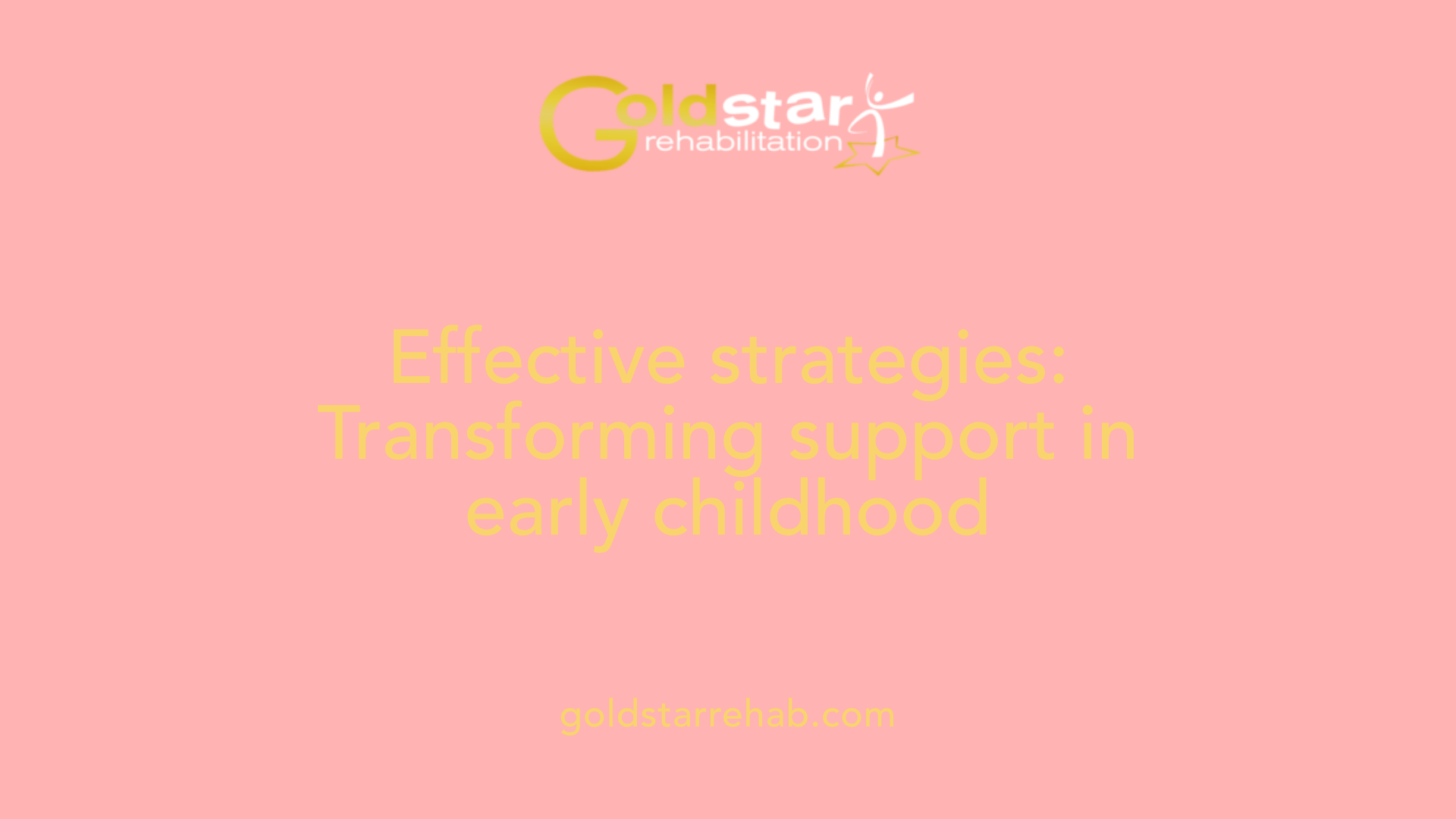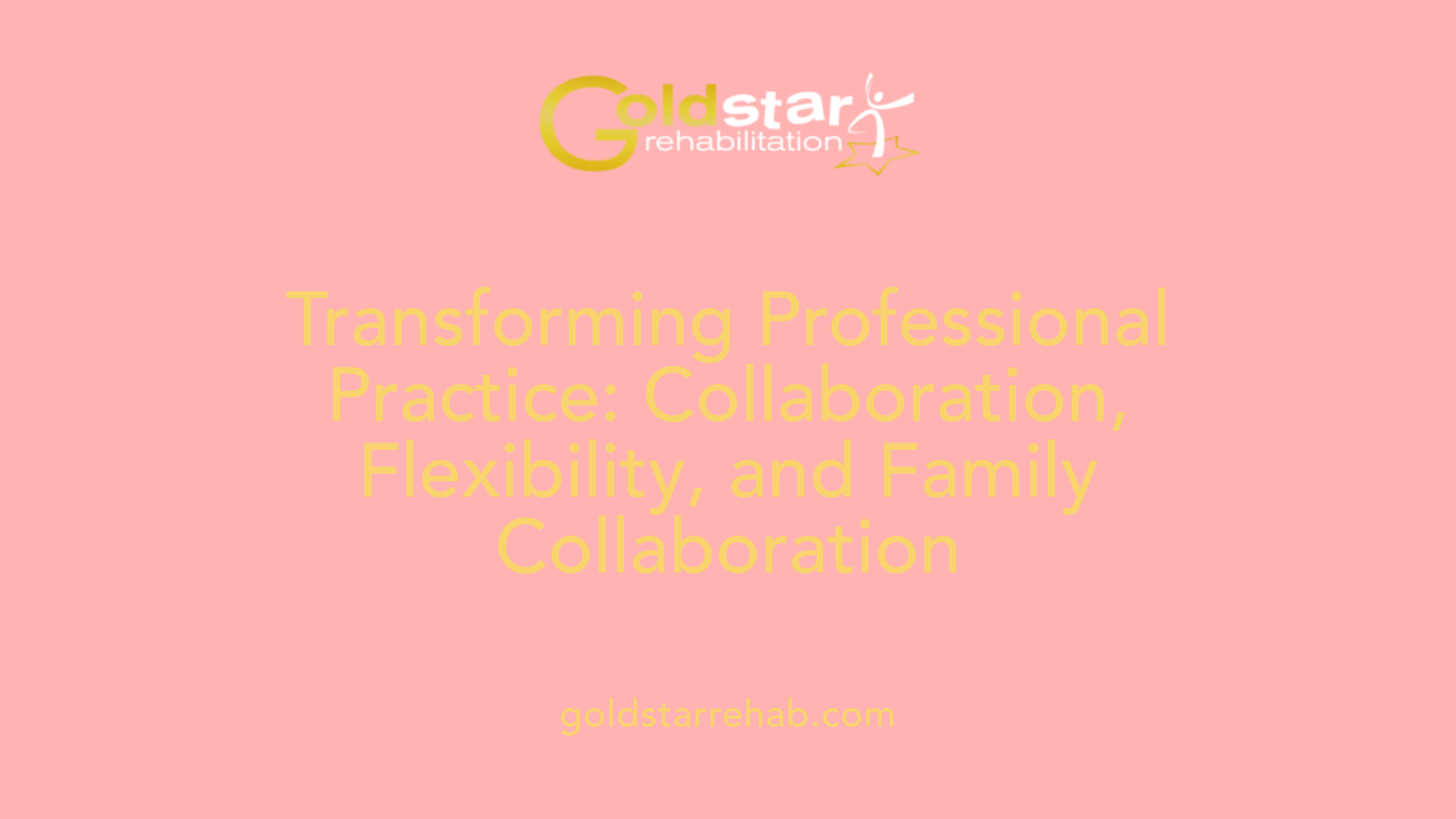Understanding Trauma and Its Impact
Trauma, whether resulting from natural disasters, violence, accidents, or loss, fundamentally alters an individual’s emotional, physical, and social well-being. Recognizing the complex responses to traumatic events is essential for effective recovery. While most people's reactions diminish over time, persistent symptoms can evolve into post-traumatic stress disorder (PTSD) or other trauma-related conditions, requiring targeted rehabilitation strategies. This article explores the phases of trauma recovery, therapeutic options, coping skills, and trauma-informed care approaches that empower individuals to rebuild their lives and foster resilience.
Initial Reactions and Recognizing the Need for Help

What are the common trauma reactions?
Most individuals who experience a traumatic event will exhibit a range of emotional, physical, mental, and behavioral reactions. These responses often include feelings of numbness, heightened alertness, distress, fatigue, and emotional upset. Many also experience physical symptoms such as headaches, stomach pain, racing heartbeat, sweating, and jumpiness. Mentally, people might face reduced concentration, intrusive memories, or disorientation. Behaviorally, avoidance of trauma reminders, sleep disturbances, or substance use may occur.
Trauma reactions are typically temporary, with the body gradually returning to normal within about a month. Emotional symptoms include fear, anxiety, shock, withdrawal, and feelings of exhaustion. Cognitive effects can involve negative beliefs about oneself or the world, difficulties in regulating emotions, and intrusive thoughts. Physical responses often manifest as fatigue, sleep problems, nausea, and muscle tension. Behavioral changes might involve avoiding situations that remind one of the event, focus on recovery activities, or engaging in risky or substance use behaviors.
Signs indicating the need for professional help
While many trauma reactions resolve over time, persistent or worsening symptoms may require professional intervention. Signs that suggest the need for expert support include:
- Ongoing anxiety, sadness, or fear beyond a few weeks
- Recurrent nightmares or flashbacks
- Avoidance of people, places, or activities
- Physical symptoms such as persistent headaches or stomach issues
- Difficulty sleeping or staying asleep
- Severely irritable or disruptive behaviors
- Feelings of guilt, hopelessness, or intense emotional numbness
- Difficulty functioning at work, in relationships, or daily routines
In children, signs can differ: younger children may show bedwetting, loss of speech, acting out, or clinginess. Older children and teens might express guilt, exhibit disruptive behaviors, or harbor thoughts of revenge. Recognizing these signs early helps determine if professional help is needed.
Understanding physical and emotional trauma responses
Trauma triggers a biological response that can escalate into a 'fight-or-flight' reaction. Common physical reactions include increased heart rate, sweating, nausea, headaches, and muscular tension. These responses stem from changes in brain functioning, such as alterations in the limbic system and neurotransmitter regulation. Sleep disturbances like nightmares and insomnia are also common, often persisting long after the traumatic event.
Emotionally, traumatic responses can include feelings of fear, guilt, shame, and emotional numbness. Many survivors report feeling 'high alert' or hypervigilant, making routine activities stressful. In some cases, dissociation—a disconnection from thoughts, feelings, or identity—serves as a protective mechanism during severe trauma.
What are the stages involved in trauma recovery?
Trauma recovery is a personalized journey that unfolds through various stages. Initially, the focus is on establishing safety and stabilization. This involves learning to regulate difficult emotions via mindfulness, deep breathing, or grounding techniques, helping individuals feel secure in their bodies and relationships.
Once stabilized, the process moves into processing and mourning the trauma. This phase includes putting words and emotions to the experiences, confronting painful memories when appropriate, and mourning the losses or disruptions caused by the trauma.
The final stage involves reconnection and integration. Individuals work toward redefining their sense of self and future, fostering resilience, establishing healthy relationships, and reclaiming life with a new perspective. Throughout these stages, professional therapies such as trauma-focused CBT, EMDR, and somatic practices support healing.
Supporting recovery with active strategies
Combining self-help with professional guidance optimizes recovery. Supportive strategies include maintaining routines, avoiding alcohol and drugs, engaging in stress-reducing activities like exercise or mindfulness, and setting realistic goals. Connecting with trusted friends, joining support groups, and accessing trauma-informed care are vital to the healing process.
Educational resources—such as books, websites, and workshops—also aid survivors in understanding trauma responses. Recognizing that healing doesn't mean forgetting or being pain-free, but rather managing symptoms effectively, fosters patience and resilience. Developing a support network and practicing self-care are fundamental steps toward rebuilding life after trauma.
When to seek professional diagnostics?
If trauma symptoms persist beyond a few weeks, worsen over time, or interfere significantly with daily life, consulting a healthcare professional is advised. Conditions like post-traumatic stress disorder (PTSD) may develop, necessitating targeted treatment.
Signs of PTSD include recurrent intrusive memories, nightmares, flashbacks, avoidance behaviors, irritability, difficulty concentrating, hyperarousal, and emotional numbness. Early intervention with psychotherapy, medication, or integrated approaches can improve outcomes.
In children, persistent trauma responses, such as ongoing bedwetting, acting out, or social withdrawal, also indicate the need for professional assessment.
Resources and support for trauma reactions
Various resources are available to support trauma survivors. These include crisis helplines, support groups, educational brochures, online tools, and clinical trial information. Accessing trauma-informed practitioners skilled in evidence-based therapies like EMDR, trauma-focused CBT, or somatic experiencing ensures effective recovery.
Building awareness about trauma responses, understanding when help is necessary, and engaging with available support systems are essential steps toward healing. Remember that most reactions to trauma are normal and tend to diminish over time, but ongoing symptoms require timely, professional intervention.
Physical and Emotional Symptoms Post-Trauma

What are physical reactions to trauma?
After experiencing trauma, many individuals notice various physical responses signifying their body's reaction to stress. Common physical reactions include headaches, stomach pains, racing heartbeat, sweating, and jumpiness. These symptoms often indicate that the nervous system remains on alert, as it processes the traumatic event.
Sometimes, trauma can lead to more persistent physical issues such as fatigue, disturbed sleep, nausea, muscle tension, and pains. These bodily symptoms could point to ongoing stress or the development of health problems related to trauma. Addressing these physical responses early with appropriate medical and psychological support can significantly aid recovery.
Trauma may also cause biological changes in the brain, which affect neurotransmitter regulation, limbic system functioning, and hypothalamic–pituitary–adrenal axis activity. Such changes often contribute to somatic complaints and can complicate the healing process if not properly managed.
What are emotional responses to trauma?
Emotional reactions to trauma can be intense and varied. Many people experience feelings of numbness, detachment, or emotional upset. Common emotions include shock, fear, sadness, anger, guilt, and shame. These feelings might be accompanied by an increased startle response and emotional numbing, which is the body's biological shutdown of feelings tied to overwhelming trauma.
Traumatized individuals often struggle with regulation of their emotions, leading to mood swings, irritability, or depression. Anxiety and hypervigilance are also prominent, making it difficult to relax or feel safe.
Sleep disturbances, such as nightmares or insomnia, are typical emotional reactions that can exacerbate feelings of exhaustion and distress. Moreover, many experience feelings of mistrust or withdrawal from loved ones, which can strain relationships.
Cognition can also be affected; intrusive thoughts, flashbacks, and difficulty concentrating are prevalent. Over time, unresolved emotional trauma may contribute to mental health conditions like post-traumatic stress disorder (PTSD), depression, or anxiety.
What behavioral reactions may indicate trauma?
Behavioral changes are common after trauma, often serving as coping mechanisms. Many people intentionally avoid reminders of the traumatic event—such as certain places, people, or activities—and develop protective behaviors to prevent re-experiencing distress.
Other behavioral signs include sleep problems, such as insomnia or frequent awakenings. Substance use, including alcohol or drugs, can increase as individuals attempt to numb emotional pain.
Reenacting trauma through self-harm, engaging in risky behaviors, or substance abuse are concerning responses that require attention. Additionally, some people experience difficulty in maintaining routines or relationships, which can impede recovery.
Avoidance behaviors, combined with hypervigilance and dissociation, serve as means to manage overwhelming feelings but often prolong the healing process unless addressed through professional help.
| Reaction Type |
Examples |
Additional Notes |
| Physical reactions |
Headaches, stomach pain, racing heart, sleep issues |
Indicate nervous system activation |
| Emotional reactions |
Fear, sadness, numbness, anger, guilt |
Impact mood and mental health |
| Behavioral reactions |
Avoidance, substance use, sleep disturbances |
Coping strategies that may hinder recovery |
Signs indicating need for professional help
Most trauma reactions tend to lessen over time with proper support. However, ongoing or severe symptoms such as persistent anxiety, nightmares, flashbacks, physical complaints, and significant functional impairment highlight the need for professional assessment.
If emotional or physical symptoms persist beyond a few weeks or significantly interfere with daily life, consulting healthcare professionals is crucial. Such ongoing reactions may signal post-traumatic stress disorder (PTSD), requiring evidence-based therapies like trauma-focused cognitive-behavioral therapy or EMDR.
Seeking help can include visiting mental health specialists, primary care providers, or crisis helplines. Support resources such as brochures, online tools, and clinical trial information are also valuable. Remember, recovery is a gradual process, and professional intervention can greatly assist in managing and alleviating trauma symptoms.
Understanding these physical and emotional reactions, and recognizing the signs that suggest the need for help, empowers trauma survivors to take proactive steps toward healing. Supporting recovery involves patience, support networks, and appropriate treatment tailored to individual needs.
Phases and Frameworks for Trauma Recovery

What are the stages involved in trauma recovery?
Trauma recovery is a highly personal and layered process that unfolds over time, often following several recognizable stages. One widely accepted model divides the journey into three main phases: establishing safety and stability, processing and mourning the trauma, and reconnecting and growing.
Initially, the focus is on creating a sense of safety. This involves learning to regulate difficult emotions, reducing feelings of danger, and establishing routines that foster stability. Techniques like mindfulness, deep breathing, yoga, and grounding exercises help individuals stay within their
Therapeutic Modalities and Evidence-Based Practices
What are effective treatment options for post-traumatic stress disorder (PTSD)?
Effective management of PTSD involves a combination of psychotherapy and medication. Psychotherapeutic approaches such as cognitive-behavioral therapy (CBT), exposure therapy, prolonged exposure, and stress inoculation therapy are designed to help individuals process traumatic memories, confront avoided situations safely, and challenge negative thoughts linked to the trauma. These therapies aim to reduce symptoms like flashbacks, nightmares, and emotional distress.
Medications also play a vital role in treatment. Selective serotonin reuptake inhibitors (SSRIs) such as sertraline and paroxetine are commonly prescribed to address associated symptoms of depression and anxiety, while other medications like prazosin are used specifically to reduce nightmares. Often, a combination of therapy and medication yields the most significant improvements.
Supporting strategies also contribute to recovery, including stress management skills, self-care routines, maintaining social connections, and physical activity. These holistic approaches help stabilize the nervous system and foster resilience.
What therapies are effective for trauma processing and healing?
Trauma-focused treatments focus on helping individuals manage the emotional and physiological impacts of traumatic memory. Eye Movement Desensitization and Reprocessing (EMDR) is one of the most well-known therapies, involving recalling traumatic events while engaging in bilateral eye movements or similar stimuli. This process helps reframe traumatic memories, reducing their emotional charge.
Trauma-focused cognitive-behavioral therapy (TF-CBT) helps individuals identify and modify negative beliefs associated with the trauma. It emphasizes gradual exposure to traumatic memories in a safe environment, facilitating emotional processing and healing.
Somatic therapies like Trauma Release Exercises (TRE) are gaining popularity for their body-based approach. TRE involves specific physical movements designed to activate the body's natural tremoring response, which can release muscular tension and emotional stress stored in the body.
All these modalities aim to integrate traumatic memories healthily, diminish avoidance, and restore emotional regulation. Selecting the appropriate therapy depends on individual needs, trauma history, and personal preferences, often with the guidance of trained mental health professionals.
Understanding the Role of Body-Based Strategies in Trauma Recovery
In addition to talk therapies, somatic and body-based strategies are vital for trauma healing. These approaches recognize that traumatic experiences are stored not only in the mind but also in the body.
Trauma Release Exercises (TRE) help activate involuntary tremors that can facilitate the release of deep muscular tension linked to traumatic stress. Regular practice under professional supervision is recommended to ensure safety and effectiveness.
Mindfulness, yoga, Chi Qong, and other movement therapies support nervous system regulation, help lower hyperarousal, and promote a sense of safety. These practices encourage grounding, body awareness, and the processing of stored stress.
By integrating bodily awareness with psychological therapy, trauma survivors can restore a sense of control over their physical and emotional health, creating a comprehensive healing process.
Evidence Summary in a Comparative Table
| Treatment Type |
Main Approach |
Key Benefits |
Suitable For |
| Psychotherapy |
CBT, exposure, trauma-focused CBT |
Modify negative thoughts, reduce avoidance |
PTSD, complex trauma |
| EMDR |
Bilateral stimulation during recall |
Rapid processing of traumatic memories |
PTSD, phobias |
| Somatic Therapy |
TRE, movement, grounding techniques |
Release physical tension, improve emotional regulation |
Chronic stress, trauma |
| Pharmacotherapy |
SSRIs, anti-anxiety agents, Prazosin |
Symptom relief, sleep improvement |
Moderate to severe PTSD |
| Mindfulness and Movement |
Yoga, Chi Qong, breathing exercises |
Nervous system regulation, grounding |
All trauma survivors |
Search Queries for Further Information
- Trauma-focused therapy options
- Somatic trauma techniques
- Evidence-based trauma treatments
This comprehensive approach to trauma recovery emphasizes personalized care, integrating evidence-based therapies, mind-body strategies, and supportive care to facilitate healing and resilience.
Trauma-Informed Care and Creating a Safe Environment
What is trauma-informed care and why is it essential in recovery?
Trauma-informed care (TIC) is an approach that recognizes the widespread impact of trauma and understands potential paths for recovery. It emphasizes creating a supportive environment characterized by safety, trustworthiness, collaboration, empowerment, and choice. This approach shifts the focus from asking
Supporting Long-Term Recovery and Resilience Building

What strategies promote post-traumatic growth?
Post-traumatic growth (PTG) refers to positive psychological change that occurs as a result of struggling with highly challenging life experiences. Several strategies can foster PTG and help individuals find new strength after trauma.
Engaging in reflective practices, such as developing a personal narrative or meaning-making, allows survivors to process their traumatic events actively. Sharing struggles and successes with trusted friends, family, or support groups helps foster emotional regulation and develops a sense of connection and belonging.
Education about trauma and its effects enriches understanding and normalizes reactions, which can reduce shame or self-blame. This knowledge encourages deliberate reflection on personal beliefs, values, and strengths, facilitating a reframing of experiences and opening vistas for new possibilities.
Therapeutic interventions like counseling, acceptance-based approaches, and therapy modalities such as EMDR or trauma-focused CBT can assist in integrating trauma healthily. Cultivating forgiveness—whether forgiving oneself or others—and engaging with spiritual or spiritual-like practices often contribute to a sense of peace.
Lastly, patience and self-compassion are critical; recognizing that healing is a gradual process helps survivors to practice resilience and allow for positive transformation to unfold gradually over time.
The Role of Support Systems and Healing Communities

Why is social support so crucial in trauma recovery?
Trauma can deeply impact a person's emotional and physical well-being, often leading to feelings of isolation, mistrust, and helplessness. Support systems—comprising family, friends, community groups, and professionals—play an essential role in healing by providing comfort, understanding, and stability. These networks help trauma survivors feel valued and less alone in their journey. Belonging to a supportive community fosters resilience, encourages positive coping strategies, and boosts confidence to navigate challenging emotions and triggers. Importantly, social support validates the survivor's experience and promotes recovery by creating an environment where healing feels possible.
How can support groups and therapy aid recovery?
Support groups offer a safe space for individuals to share experiences and learn coping skills from others who have faced similar trauma. These groups facilitate mutual understanding and reduce feelings of shame or embarrassment. Engaging in group therapy or peer-led programs can help survivors realize they are not isolated and that others understand their struggles.
Therapy provided by mental health professionals—such as trauma-focused cognitive-behavioral therapy (CBT), EMDR, or somatic experiencing—addresses specific trauma symptoms, helps process painful memories, and promotes emotional regulation. These therapeutic approaches can be complemented by support groups and community resources, forming a comprehensive network that promotes healing.
How does family and community involvement influence healing?
Involving family and the broader community in trauma recovery is vital. Family members can offer continuous emotional support, assist in monitoring progress, and help implement coping strategies. Educational programs for families help them understand trauma responses, such as irritability or withdrawal, and respond supportively.
Community involvement can include local initiatives focusing on trauma awareness, peer support programs, and trauma-informed care practices in healthcare and social services. Such approaches ensure that environments—homes, schools, workplaces—are safe and understanding spaces, reducing the risk of re-traumatization.
Creating a community that values healing fosters a culture of safety and empathy. This collective effort helps rebuild trust and enables survivors to re-engage with society confidently.
| Aspect |
Description |
Support Examples |
| Emotional Support |
Validating feelings and providing reassurance. |
Regular check-ins, empathetic listening |
| Practical Assistance |
Helping with daily tasks or logistical needs. |
Childcare, transportation to appointments |
| Therapeutic Resources |
Access to mental health professionals and specialized therapies. |
Trauma-focused therapy, counseling centers |
| Peer Support |
Connecting with others who have experienced similar trauma. |
Support groups, peer-led sessions |
| Educational Resources |
Providing information about trauma and coping strategies. |
Brochures, workshops, online courses |
| Community Engagement |
Involvement in community activities that promote healing and resilience. |
Support networks, community centers, faith groups |
Why are these networks essential for lasting recovery?
Building resilient support systems helps survivors develop adaptive coping skills, regain trust, and find purpose after trauma. These networks act as a foundation for ongoing recovery, ensuring that individuals are not left alone in their healing process. They also create opportunities for survivors to give back, fostering empowerment and hope.
In conclusion, support systems—social, familial, and community-based—are integral to trauma recovery. They provide the emotional and practical scaffolding necessary for survivors to rebuild their lives. Cultivating these networks enhances resilience, promotes mental health, and fosters a collective healing environment, which is crucial in overcoming trauma's lasting impacts.
Integrating Self-Care and Holistic Approaches into Trauma Recovery

What are some effective trauma coping skills?
Recovering from trauma often involves developing and practicing specific coping skills that help manage emotional and physical reactions. Effective techniques include breathing exercises such as the 4-7-8 method, where you inhale for four counts, hold for seven, and exhale for eight, and square breathing, which involves inhaling, holding, exhaling, and holding again for equal counts. These practices activate the nervous system’s calming response.
Grounding techniques are also highly beneficial. The 5-4-3-2-1 method guides you to identify five things you see, four you hear, three physical sensations, two tastes, and one smell—all of which help divert attention from traumatic memories and anchor you in the present.
Body awareness exercises, like body scans, promote mindfulness by helping individuals recognize physical reactions to stress such as tension or rapid heartbeat. Visualization techniques, such as guided imagery, can be used to evoke calming mental images and reduce distress.
Cultivating self-compassion is vital for emotional healing. Strategies include speaking to oneself kindly, changing critical internal dialogue, and practicing the Self-Compassion Break, which involves recognizing suffering, acknowledging shared human experience, and offering words of kindness to oneself.
Engaging in positive activities, seeking social support, and participating in therapeutic activities like journaling or art therapy also support recovery. Maintaining a routine, managing nightmares through sleep hygiene, and practicing relaxation techniques can further aid in healing.
It’s important to remember that trauma recovery is a gradual process. Consistently applying these skills, coupled with professional support if necessary, can build resilience and promote emotional stability over time.
How can physical activity and creative therapies support trauma recovery?
Physical activity plays a crucial role in healing from trauma. Activities such as walking, swimming, dancing, and martial arts help regulate the nervous system by releasing endorphins—natural mood boosters—and reducing overall stress levels. Incorporating mindful awareness during movement enhances their therapeutic value. For example, paying attention to the sensation of muscles stretching or feet hitting the ground promotes grounding and reduces hyperarousal.
Creative therapies—like art, music, dance, and writing—offer non-verbal outlets for emotions that can be difficult to express with words. Engaging in art projects, playing musical instruments, dancing, or expressive writing allows trauma survivors to process intense feelings in a safe, controlled manner. These activities foster emotional release, help reframe traumatic memories, and build resilience.
Utilizing hobbies and creative outlets as part of daily routines can cultivate a sense of mastery and joy, which are essential for post-traumatic growth. They facilitate a return to normalcy, promote emotional healing, and strengthen social bonds when shared with others.
Integrating movement and creative expression into trauma recovery provides holistic benefits, improving mental health, reducing PTSD symptoms, and supporting overall well-being. Combining these approaches with trauma-focused therapies creates a comprehensive framework that addresses both mind and body in the healing journey.
Broader Implications for Trauma Healing
Implementing self-care routines and holistic therapies encourages active participation in recovery. Such practices empower individuals, foster resilience, and foster a sense of safety and control.
Supporting trauma survivors involves creating a safe environment, offering consistent routines, and validating their experiences. Incorporating physical activity and creative therapies complements psychological interventions, offering diverse pathways to healing.
Ultimately, trauma recovery is deeply individual. Combining evidence-based techniques with personalized self-care strategies and creative outlets enhances the capacity for healing and helps survivors rebuild their lives with renewed strength and purpose.
To explore these tools further, resources such as books, online courses, and workshops on holistic trauma recovery can provide valuable guidance. Engaging with community support groups or professionals trained in trauma-informed care enhances the effectiveness of these approaches and sustains long-term wellness.
Trauma Healing and the Power of Resilience

What strategies promote post-traumatic growth?
Post-traumatic growth refers to the positive psychological change experienced as a result of the struggle with highly challenging life circumstances. Several strategies can foster this type of growth.
Engaging in reflective practices is fundamental. Narrative development and meaning-making exercises help individuals process their traumatic experiences, helping them find a sense of coherence and personal significance.
Sharing struggles with trusted friends, family, or support groups enables emotional regulation, providing a sense of connection and reducing feelings of isolation.
Education about trauma and its effects equips survivors with understanding, which can normalize their reactions and grant them a foundation for recovery.
Therapeutic approaches, such as counseling or trauma-focused therapy, help survivors accept and gradually integrate their trauma, turning painful memories into sources of growth.
Fostering forgiveness—towards oneself or others—and exploring spiritual or existential beliefs can also facilitate healing.
Deliberately reflecting on personal beliefs, strengths, and values helps individuals reframe their traumatic experiences, often leading to a renewed sense of purpose.
Patience and self-compassion are critical, highlighting that psychological transformation unfolds gradually.
Overall, these strategies cultivate resilience, allowing individuals not only to recover but also to thrive after adversity.
How can individuals rebuild their lives after trauma?
Rebuilding life after trauma involves a holistic approach emphasizing safety, support, and self-care.
The first step is seeking professional support, including therapy that targets trauma symptoms. Therapeutic modalities like trauma-focused CBT or EMDR assist in processing distressing emotions and reducing symptoms like flashbacks or hypervigilance.
Establishing a safe environment—both physically and emotionally—is crucial. Reconnecting with trusted friends, family, or community groups fosters a sense of belonging and validation.
Practicing self-care routines such as mindfulness meditation, gentle exercise like walking or yoga, and engaging in hobbies can restore emotional balance.
Setting small, achievable goals helps rebuild confidence and provides a sense of control over recovery.
Celebrating small victories affirms resilience and encourages ongoing progress.
Reminding oneself of personal strengths and recalling past instances of overcoming challenges reinforces hope.
Patience, understanding that healing takes time, and compassion towards oneself are vital components.
Through these combined efforts, individuals can gradually restore their emotional health, rebuild relationships, and find renewed purpose.
What are long-term responses to trauma that individuals may experience?
Long-term responses to trauma can manifest in various emotional, cognitive, physical, and behavioral ways.
Psychologically, some individuals experience persistent anxiety, depression, and symptoms associated with PTSD, such as intrusive memories, nightmares, hypervigilance, and emotional numbness.
Neurobiological changes may occur, including alterations in limbic system functioning and dysregulation of the hypothalamic–pituitary–adrenal axis, affecting mood and stress responses.
Cognitively, trauma survivors might struggle with concentration, decision-making, and may develop distorted core beliefs about safety and trust.
Physically, trauma can evoke ongoing health issues like fatigue, headaches, gastrointestinal problems, cardiovascular issues, and immune system dysregulation.
Behaviorally, there’s an increased tendency toward substance misuse, self-harm, or risky behaviors as ways to cope.
Socially, individuals may isolate themselves or have difficulty maintaining relationships.
The prognosis varies: some recover fully; others continue to experience mild to moderate symptoms requiring ongoing support.
Treatment options, including psychotherapy, medication, and support groups, are vital for managing long-term effects and restoring functioning.
Moving Towards a Resilient Future
While trauma can have profound and lasting effects, recovery is an empowering journey marked by phases of healing and growth. Embracing a comprehensive approach that combines professional therapies, trauma-informed care, social support, and self-care practices can facilitate physical and emotional rehabilitation. Recognizing individual responses, respecting the healing process, and fostering resilience through meaning-making and community involvement help survivors rebuild their lives. The path to recovery is highly personal, requiring patience, compassion, and perseverance, ultimately leading to renewed purpose, strength, and an enriched capacity to face life's challenges.
References
.png)




















 Neurological rehabilitation encompasses a diverse array of treatment options tailored to meet the unique needs of each patient and the specific neurological condition they face.
Neurological rehabilitation encompasses a diverse array of treatment options tailored to meet the unique needs of each patient and the specific neurological condition they face.
 Neurorehabilitation is designed to support individuals suffering from various neurological conditions by helping them regain lost functions, improve mobility, and enhance overall quality of life.
Neurorehabilitation is designed to support individuals suffering from various neurological conditions by helping them regain lost functions, improve mobility, and enhance overall quality of life.


















 When applying for a position as a Registered Behavior Technician (RBT), clearly showcasing your certification is crucial. It helps employers immediately recognize your qualifications and dedication to the profession.
When applying for a position as a Registered Behavior Technician (RBT), clearly showcasing your certification is crucial. It helps employers immediately recognize your qualifications and dedication to the profession.



 In rehabilitation settings, understanding how well patients follow prescribed therapy routines and the strategies they employ is essential for optimizing outcomes. The Project Star Catcher system exemplifies an advanced method of data collection by utilizing real-time motion tracking during gameplay. This system captures detailed metrics such as the number of stars caught with both weak and strong arms, arm positions, rotations, head posture, and gameplay duration, all of which are exported for further analysis.
In rehabilitation settings, understanding how well patients follow prescribed therapy routines and the strategies they employ is essential for optimizing outcomes. The Project Star Catcher system exemplifies an advanced method of data collection by utilizing real-time motion tracking during gameplay. This system captures detailed metrics such as the number of stars caught with both weak and strong arms, arm positions, rotations, head posture, and gameplay duration, all of which are exported for further analysis.





 Early intervention programs utilize a variety of proven strategies to support children’s developmental growth. The foundation of these programs is rooted in evidence-based therapies, which have demonstrated effectiveness through research. These include behavioral therapies like Applied Behavior Analysis (ABA), as well as speech and language therapy, occupational therapy, physical therapy, and sensory integration techniques. These approaches target specific areas such as communication, motor skills, and social behavior.
Early intervention programs utilize a variety of proven strategies to support children’s developmental growth. The foundation of these programs is rooted in evidence-based therapies, which have demonstrated effectiveness through research. These include behavioral therapies like Applied Behavior Analysis (ABA), as well as speech and language therapy, occupational therapy, physical therapy, and sensory integration techniques. These approaches target specific areas such as communication, motor skills, and social behavior.


































 Are there free resources available for creating autism learning plans?
Are there free resources available for creating autism learning plans?


 Patient success stories serve as powerful tools for encouraging others on their health journeys. When hospitals and healthcare providers share these personal narratives, they demonstrate that recovery and positive outcomes are possible, even in complex cases.
Patient success stories serve as powerful tools for encouraging others on their health journeys. When hospitals and healthcare providers share these personal narratives, they demonstrate that recovery and positive outcomes are possible, even in complex cases.

 Patient success videos have become an essential tool for healthcare organizations aiming to showcase genuine recovery stories. Trusted institutions such as the Mayo Clinic, Cleveland Clinic, Stanford Children’s Health, and Nemours Children’s Health contribute to the credibility of these videos by sharing verified, real patient journeys. Smaller hospitals, like Maple Grove Hospital, also benefit significantly, sometimes outranking larger systems in search results, which underscores the trustworthiness and influence of authentic patient narratives.
Patient success videos have become an essential tool for healthcare organizations aiming to showcase genuine recovery stories. Trusted institutions such as the Mayo Clinic, Cleveland Clinic, Stanford Children’s Health, and Nemours Children’s Health contribute to the credibility of these videos by sharing verified, real patient journeys. Smaller hospitals, like Maple Grove Hospital, also benefit significantly, sometimes outranking larger systems in search results, which underscores the trustworthiness and influence of authentic patient narratives.


















































 Autism diagnostic evaluations for children and adolescents involve a detailed and multidisciplinary process. Since there is no single medical test that confirms autism spectrum disorder (ASD), professionals rely on behavioral assessments, developmental history, and standardized tools. These evaluations are conducted by trained specialists such as pediatricians, psychologists, and other autism experts.
Autism diagnostic evaluations for children and adolescents involve a detailed and multidisciplinary process. Since there is no single medical test that confirms autism spectrum disorder (ASD), professionals rely on behavioral assessments, developmental history, and standardized tools. These evaluations are conducted by trained specialists such as pediatricians, psychologists, and other autism experts. Autism centers provide a comprehensive array of services designed to support individuals with autism spectrum disorder (ASD) and their families. These programs are tailored to meet the developmental needs of children, adolescents, and even adults.
Autism centers provide a comprehensive array of services designed to support individuals with autism spectrum disorder (ASD) and their families. These programs are tailored to meet the developmental needs of children, adolescents, and even adults.

 Supporting children with autism involves a variety of educational tools, therapeutic services, and community resources designed to empower caregivers and facilitate developmental progress.
Supporting children with autism involves a variety of educational tools, therapeutic services, and community resources designed to empower caregivers and facilitate developmental progress.





















 There are several approaches within ABA therapy tailored to meet the diverse needs of children with autism at various developmental stages. Discrete Trial Training (DTT) is a highly structured technique that involves step-by-step instructions, repetition, and positive reinforcement to teach specific skills. It is particularly effective for very young children or those requiring intensive skill development.
There are several approaches within ABA therapy tailored to meet the diverse needs of children with autism at various developmental stages. Discrete Trial Training (DTT) is a highly structured technique that involves step-by-step instructions, repetition, and positive reinforcement to teach specific skills. It is particularly effective for very young children or those requiring intensive skill development. What processes are involved in delivering ABA therapy?
What processes are involved in delivering ABA therapy?





 Parents and caregivers play a crucial role in supporting children through feeding therapy. Their involvement can greatly influence the child's progress and attitude towards food. To facilitate at-home support, caregivers should create a calm, positive, and consistent mealtime environment. This means establishing regular routines, using supportive positioning, and making mealtimes stress-free. Participating in food exploration activities is also vital. Activities like finger painting with pudding, making fruit kabobs, or sensory bins allow children to explore textures, colors, and smells without pressure to eat. These play-based experiences help children become more comfortable with different foods, fostering curiosity and acceptance.
Parents and caregivers play a crucial role in supporting children through feeding therapy. Their involvement can greatly influence the child's progress and attitude towards food. To facilitate at-home support, caregivers should create a calm, positive, and consistent mealtime environment. This means establishing regular routines, using supportive positioning, and making mealtimes stress-free. Participating in food exploration activities is also vital. Activities like finger painting with pudding, making fruit kabobs, or sensory bins allow children to explore textures, colors, and smells without pressure to eat. These play-based experiences help children become more comfortable with different foods, fostering curiosity and acceptance.











 What are the common treatment approaches for opioid addiction in rehab centers?
What are the common treatment approaches for opioid addiction in rehab centers?
 Rehabilitation plays a vital role in helping individuals overcome opioid addiction by offering a comprehensive and supportive environment designed to address the complex nature of this condition.
Rehabilitation plays a vital role in helping individuals overcome opioid addiction by offering a comprehensive and supportive environment designed to address the complex nature of this condition. What are the typical phases and durations of opioid addiction treatment in rehab centers?
What are the typical phases and durations of opioid addiction treatment in rehab centers? Support groups such as Narcotics Anonymous (NA) and SMART Recovery are vital components of ongoing recovery from opioid addiction. These communities offer a space where individuals can share their experiences, challenges, and successes with others who understand their journey.
Support groups such as Narcotics Anonymous (NA) and SMART Recovery are vital components of ongoing recovery from opioid addiction. These communities offer a space where individuals can share their experiences, challenges, and successes with others who understand their journey.

























 Understanding the stages of injury recovery helps in designing effective rehabilitation programs that incorporate strength training at appropriate times.
Understanding the stages of injury recovery helps in designing effective rehabilitation programs that incorporate strength training at appropriate times.










 Physical therapy plays a crucial role in supporting children with low muscle tone, also known as hypotonia. The primary aim is to strengthen muscles and improve coordination, which are fundamental to many motor skills. As children progress through therapy, they develop better control over their movements, enabling them to reach important developmental milestones such as sitting, crawling, standing, and walking.
Physical therapy plays a crucial role in supporting children with low muscle tone, also known as hypotonia. The primary aim is to strengthen muscles and improve coordination, which are fundamental to many motor skills. As children progress through therapy, they develop better control over their movements, enabling them to reach important developmental milestones such as sitting, crawling, standing, and walking.



























 Skilled nursing professionals are instrumental in managing diabetes among residents in long-term care facilities. Their responsibilities span various critical activities that ensure safe and effective diabetes management.
Skilled nursing professionals are instrumental in managing diabetes among residents in long-term care facilities. Their responsibilities span various critical activities that ensure safe and effective diabetes management.


 Effective blood glucose control and vigilant management are vital components of diabetes care in long-term care (LTC) facilities. Proper monitoring aims to prevent acute complications such as hypoglycemia and hyperglycemia, both of which can lead to serious health outcomes including falls, hospitalizations, or even death. These complications are particularly dangerous among frail, elderly residents with multiple health conditions.
Effective blood glucose control and vigilant management are vital components of diabetes care in long-term care (LTC) facilities. Proper monitoring aims to prevent acute complications such as hypoglycemia and hyperglycemia, both of which can lead to serious health outcomes including falls, hospitalizations, or even death. These complications are particularly dangerous among frail, elderly residents with multiple health conditions.











 Establishing a cohesive routine during recovery involves practical strategies that promote health, stability, and resilience. Starting small and gradually expanding your activities is essential. For example, incorporating simple habits like short walks, daily journaling, or mindfulness exercises can lay a strong foundation.
Establishing a cohesive routine during recovery involves practical strategies that promote health, stability, and resilience. Starting small and gradually expanding your activities is essential. For example, incorporating simple habits like short walks, daily journaling, or mindfulness exercises can lay a strong foundation.










 Many family caregivers acknowledge a significant lack of comprehensive training to perform their roles effectively. Studies indicate that approximately 35.7% of caregivers express a desire for additional education on at least one caregiving activity, highlighting widespread perceived gaps in skill development. Nearly half, about 48.2%, feel the need for more knowledge regarding medical procedures, which are increasingly performed at home due to the shift of complex tasks from healthcare professionals.
Many family caregivers acknowledge a significant lack of comprehensive training to perform their roles effectively. Studies indicate that approximately 35.7% of caregivers express a desire for additional education on at least one caregiving activity, highlighting widespread perceived gaps in skill development. Nearly half, about 48.2%, feel the need for more knowledge regarding medical procedures, which are increasingly performed at home due to the shift of complex tasks from healthcare professionals. Ongoing training and education play a vital role in enhancing a caregiver's ability to provide safe and effective support for their loved ones. When caregivers receive regular updates and training, they stay informed about the latest best practices in medical procedures, safety protocols, and behavioral management. This continual learning directly translates into improved safety, risk mitigation, and increased confidence.
Ongoing training and education play a vital role in enhancing a caregiver's ability to provide safe and effective support for their loved ones. When caregivers receive regular updates and training, they stay informed about the latest best practices in medical procedures, safety protocols, and behavioral management. This continual learning directly translates into improved safety, risk mitigation, and increased confidence.














 After completing initial treatment at a rehabilitation facility, ongoing support plays a vital role in maintaining sobriety and fostering long-term recovery. One of the main avenues for continued assistance is through regular therapy sessions and participation in support groups. These groups, such as Alcoholics Anonymous (AA) or Narcotics Anonymous (NA), provide peer encouragement, share experiences, and reinforce sobriety principles.
After completing initial treatment at a rehabilitation facility, ongoing support plays a vital role in maintaining sobriety and fostering long-term recovery. One of the main avenues for continued assistance is through regular therapy sessions and participation in support groups. These groups, such as Alcoholics Anonymous (AA) or Narcotics Anonymous (NA), provide peer encouragement, share experiences, and reinforce sobriety principles.



 Before transitioning to independent living or a senior community, a thorough assessment of the individual's current capabilities and needs is crucial.
Before transitioning to independent living or a senior community, a thorough assessment of the individual's current capabilities and needs is crucial.
 Joining sober living communities and support groups plays a vital role in maintaining recovery. These environments provide peer understanding, accountability, and shared experiences, which can significantly boost confidence and resilience.
Joining sober living communities and support groups plays a vital role in maintaining recovery. These environments provide peer understanding, accountability, and shared experiences, which can significantly boost confidence and resilience.



 Are there printable resources or templates available to create visual schedules for children with autism?
Are there printable resources or templates available to create visual schedules for children with autism?
 To truly harness the positive effects of visual schedules, it is important for caregivers and educators to consistently review and update them based on the child's evolving skills and needs. As children grow and develop, their routines and preferences may change, and their visual supports should reflect these updates to remain effective.
To truly harness the positive effects of visual schedules, it is important for caregivers and educators to consistently review and update them based on the child's evolving skills and needs. As children grow and develop, their routines and preferences may change, and their visual supports should reflect these updates to remain effective.







 Managing Oppositional Defiant Disorder (ODD) often requires a combination of behavioral strategies, therapy, and in some cases, medication. Early and consistent intervention can significantly improve outcomes for children with ODD.
Managing Oppositional Defiant Disorder (ODD) often requires a combination of behavioral strategies, therapy, and in some cases, medication. Early and consistent intervention can significantly improve outcomes for children with ODD.















 In rehabilitation settings, different stretching techniques are used carefully to improve flexibility, increase range of motion, promote healing, and prevent future injuries.
In rehabilitation settings, different stretching techniques are used carefully to improve flexibility, increase range of motion, promote healing, and prevent future injuries.
 When integrating stretching into rehabilitation routines, a careful, individualized approach is crucial to promote healing and prevent further injury. Healthcare providers often recommend starting slowly, with gentle stretches that are tailored to the patient's specific condition and progress.
When integrating stretching into rehabilitation routines, a careful, individualized approach is crucial to promote healing and prevent further injury. Healthcare providers often recommend starting slowly, with gentle stretches that are tailored to the patient's specific condition and progress.













 Parents should be vigilant for signs of persistent toe walking in their children, particularly beyond the age of 2 or 3 years. One clear indicator is if the child consistently walks on the balls of their feet with their heels remaining off the ground, which is not typical for their age.
Parents should be vigilant for signs of persistent toe walking in their children, particularly beyond the age of 2 or 3 years. One clear indicator is if the child consistently walks on the balls of their feet with their heels remaining off the ground, which is not typical for their age. How is toe walking diagnosed and assessed?
How is toe walking diagnosed and assessed? Persistent toe walking can have several adverse effects on a child's health and mobility. One of the primary concerns is the development of muscle tightness and contractures, particularly in the calves and Achilles tendons. Over time, this tightness makes it harder for children to move their ankles normally, leading to limited range of motion.
Persistent toe walking can have several adverse effects on a child's health and mobility. One of the primary concerns is the development of muscle tightness and contractures, particularly in the calves and Achilles tendons. Over time, this tightness makes it harder for children to move their ankles normally, leading to limited range of motion.

















 A speech therapy evaluation is a detailed process designed to understand a child's communication abilities and identify any areas needing support. It begins with collecting a thorough medical and developmental history from parents or guardians. This includes questions about milestones, medical conditions, ear infections, and previous speech or language concerns.
A speech therapy evaluation is a detailed process designed to understand a child's communication abilities and identify any areas needing support. It begins with collecting a thorough medical and developmental history from parents or guardians. This includes questions about milestones, medical conditions, ear infections, and previous speech or language concerns.


 Feeding and swallowing challenges in children often present through a variety of observable signs and behaviors. Recognizing these cues early can help in prompt assessment and intervention, which are vital for promoting safe and adequate nutrition.
Feeding and swallowing challenges in children often present through a variety of observable signs and behaviors. Recognizing these cues early can help in prompt assessment and intervention, which are vital for promoting safe and adequate nutrition. Pediatric feeding and swallowing disorders often stem from an assortment of medical, structural, and neurological causes. Understanding these underlying factors is essential for accurate diagnosis and effective treatment.
Pediatric feeding and swallowing disorders often stem from an assortment of medical, structural, and neurological causes. Understanding these underlying factors is essential for accurate diagnosis and effective treatment.
 Children with feeding and swallowing difficulties benefit from a variety of targeted treatment approaches designed to improve safety, nutrition, and mealtime experiences. A multidisciplinary team often conducts comprehensive assessments, including clinical observations and instrumental evaluations such as videofluoroscopic swallow studies (VFSS) or fiberoptic endoscopic evaluations of swallowing (FEES). These evaluations help identify the specific nature of the disorder and guide personalized treatment plans.
Children with feeding and swallowing difficulties benefit from a variety of targeted treatment approaches designed to improve safety, nutrition, and mealtime experiences. A multidisciplinary team often conducts comprehensive assessments, including clinical observations and instrumental evaluations such as videofluoroscopic swallow studies (VFSS) or fiberoptic endoscopic evaluations of swallowing (FEES). These evaluations help identify the specific nature of the disorder and guide personalized treatment plans.





































 Tailored exercise programs are highly effective in alleviating pain and enhancing mobility among older adults. These personalized interventions are designed based on a thorough assessment of the individual's specific pain sources, movement limitations, and overall physical condition.
Tailored exercise programs are highly effective in alleviating pain and enhancing mobility among older adults. These personalized interventions are designed based on a thorough assessment of the individual's specific pain sources, movement limitations, and overall physical condition.
 How do tailored exercise programs benefit mental health and self-efficacy?
How do tailored exercise programs benefit mental health and self-efficacy?


















 How do rehab centers help individuals rebuild a sober support network?
How do rehab centers help individuals rebuild a sober support network?


























